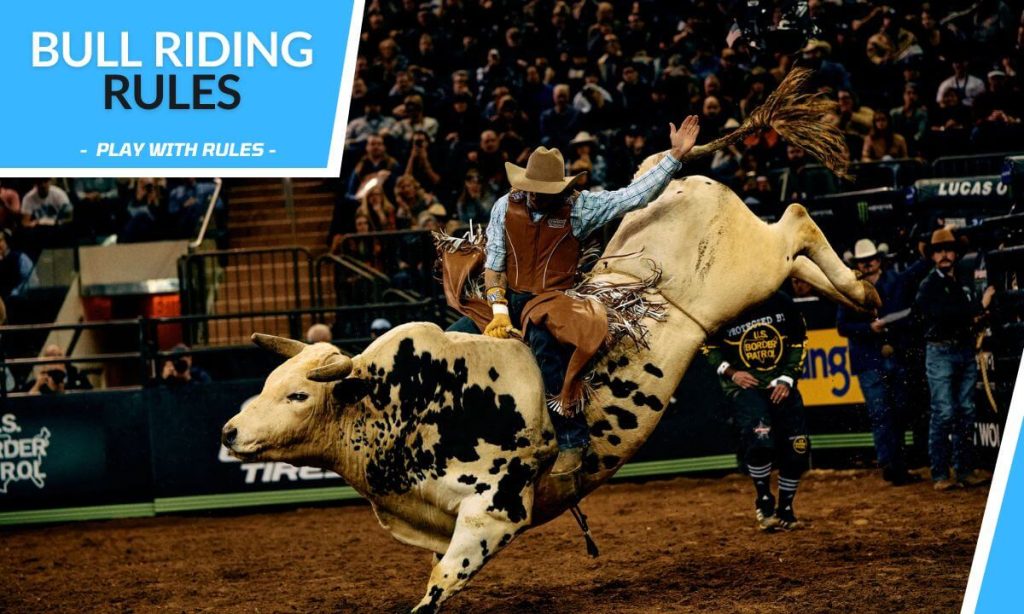Bull Riding Rules: Welcome to the heart-pounding world of bull riding, a sport where the rules of bull riding are the only thing more intense than the riders. Picture a fearless cowboy clinging to a bucking bull with all his might. It’s a thrilling and seemingly impossible sight, but there’s a method to this madness.
Perilous as it is, bull riding quickly earned a reputation for being one of the most exciting sports worldwide to watch and participate in —a test of mettle and a battle of wills. Today, we shall discuss bull riding, the fine print, exciting sports facts, and more. So buckle up and hang on!
Table of Contents
How To Ride A Bull?
In bull riding, riders or cowboys ride a bucking bull and try to stay on for as long as possible while displaying their unquestionable bravery. Using spurs (in a way so as not to harm any animals), the rider and the bull put on a show for the audience and the judges to secure points.
The rider uses the bull rope (using one hand only) and an expert combination of balance, mobility, skill, and endurance (both physical and mental) to showcase the ability to control the untamable power of a bull by staying on for as long as possible. The sport rightfully celebrates the unyielding spirit of the ‘Cowboy.’
Objective
In bull riding, the rider aims to stay on top of the bull for at least 8 seconds after it enters the arena. Scoring starts only after a rider has managed to stay on top of the bucking bull for 8 seconds. The rider with the highest score at the end of the competition wins.
It may sound like a simple task, but it’s anything but that! There are exact bull riding rules that must be followed at all times. Let’s find out what they are!
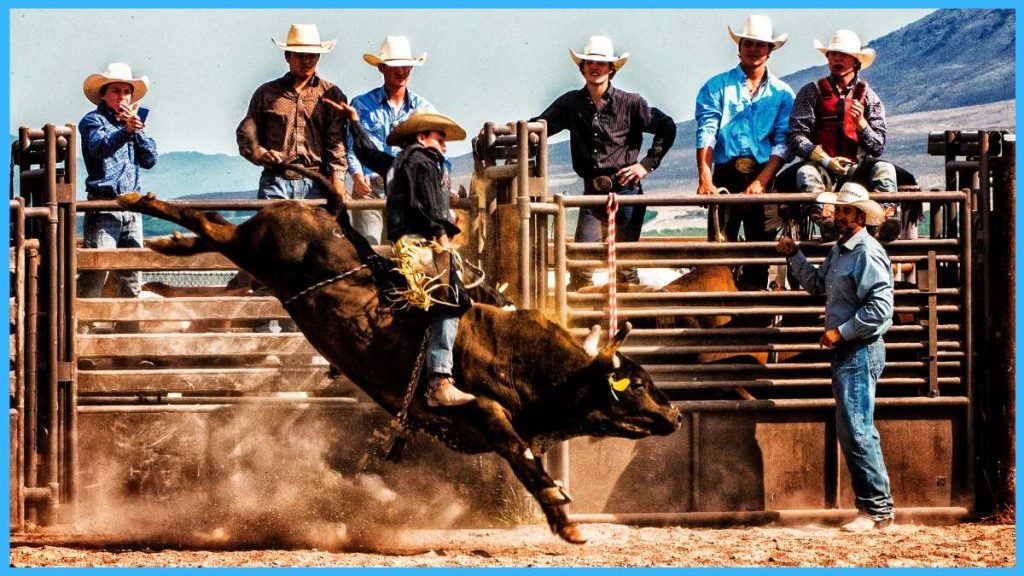
Bull Riding Rules
Bull riding is one of the most popular yet most dangerous of all rodeo sports, and rightfully so. A bucking, raging bull that cannot be tamed and a resolute ‘Cowboy’ who will not give up – bull riding has all the ingredients that a fiery, electrifying sport is made of. However, the rules of bull riding are pretty straightforward:
General Bull Riding Rules
This section will discuss the general rules of bull riding, including the time of each round, the number of matches played, and other details.
- Bull riding competitions consist of multiple rounds. Most of the time, these competitions span for over 2-3 days.
- The generally accepted minimum ride time in bull riding is 8 seconds (may vary depending on the organization).
- Judges start scoring the round if and only if the rider has managed to stay past the 8-second mark.
- Bulls are selected based on their strength, mobility, and ability to dismount or buck off a rider.
- According to the bull riding rules, the rider must mount the bull in a small, enclosed place called the bucking shoot or bucking chute. After that, the rider positions himself optimally and secures a firm grip on the flank strap or bull rope.
- The chute doors open only after the rider nods to signal that he is ready to ride.
- A rider is allowed to ride only one bull per night.
- The top 20 riders are selected based on the points scored within the first two days. Then, a final round called ‘Short Go’ is organized between the highest-scoring 20 riders. The rider who scores the highest in Short Go is dubbed the champion.
- Per bull riding rules, spurs used in competitions cannot be sharpened or have a fixed rowel. To protect the bulls, PBR (Professional Bull Riders) only allows the use of two kinds of spurs.
Rides, Re-rides, And Offs
What qualifies as a legal ride? What is a re-ride? When the rider is ‘off the bull?’ Are you wondering what these terms are? Fret no more! Read on to find the answers to these questions:
- Rules of bull riding state that a ride will be declared a qualifying ride only if the rider manages to stay atop the bull for 8 seconds or more after the bull enters the arena.
- A rider may use the spurs to encourage the bull to perform more actions or tricks.
- The rider can use only one hand to grip the flank strap (or the bull rope) while riding the bull. Bull riding rules state that he may not use the other hand to touch the bull or equipment. However, he may use that hand to balance himself (without touching anything).
- If a rider touches the ground, he loses grip of the flank strap (also known as the bull strap or bull rope), or if he touches the bull using the other hand, he will be declared as ‘off the bull.’
- The judges offer a re-ride (explained below under ‘Important Terms’) by throwing a red flag in the arena. Riders can also appeal for a re-ride.
- If a rider is offered a re-ride, he has to give up all the points he collected during the round in question. He has to wait until the other riders are done performing. Then, in the end, he gets a chance to re-ride.
Disqualification
A timer runs when a rider perches himself upon his bull in the chute. If the countdown expires before the rider gives the ‘Read’ nod, the rider or the bull is disqualified. However, per bull riding rules, if the bull is disqualified, the rider can get a free re-ride. If the rider is disqualified, then it’s over.
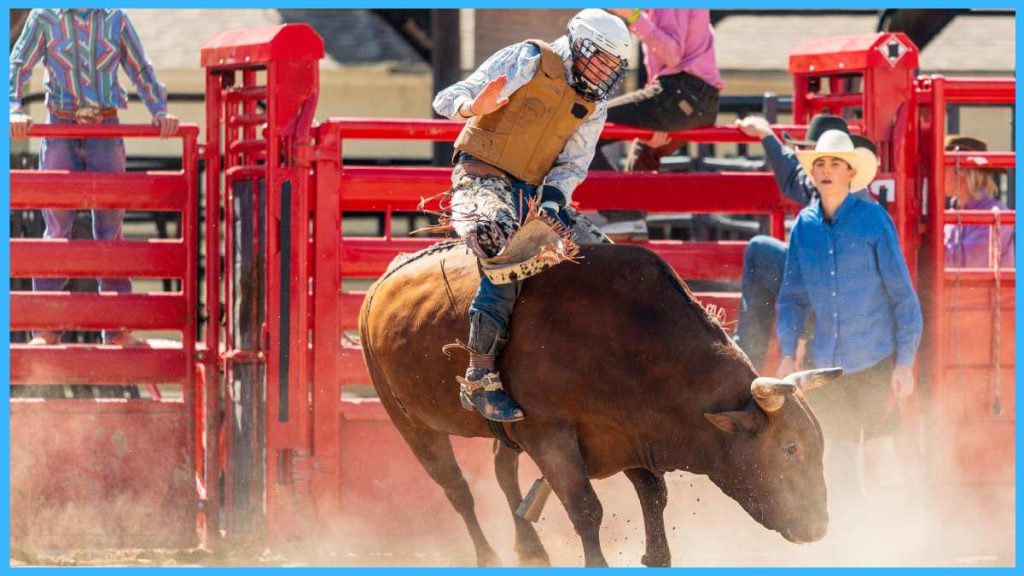
Important Terms
Here are some fundamental terms associated with the sport of bull riding. It is essential to know the meaning of the following terms to get a better understanding of the sport:
- Slap—When a rider uses the spare hand (the hand other than the one used for holding onto the bull rope), it is called a slap, and it results in his round ending (since he is off the bull).
- Spurring happens when a bull rider lifts his legs away from the bull’s body and returns them. It is not necessary, but it is a skill of sorts. Spurring encourages extra points as it shows prowess and control.
- Wrecks are when bulls forcibly throw their riders off their backs using a combination of joint-jerking movements.
- Bull Fighters– Also known as Rodeo Clowns. Bullfighters are courageous individuals who are always present in the arena during a null-riding competition/round. Their job is to distract the bull after the rider/cowboy is dismounted or thrown so that the rider can safely escape the arena. It is a difficult job.
- Re-ride – Per bull riding rules, a re-ride is a second opportunity given to a rider to perform and score highly. This is offered only under special circumstances. For example, if the judges feel that the bull didn’t put up a challenge for the rider, underperformed, or if anything happens that ruins the rider’s chances of scoring highly (including bull rope or flank strap tears, railing, and more), then the judges can signal for a re-ride by throwing a red flag into the arena.
Bull Riding Scoring
- Judges score the rider and the bull for an aggregate score for the rider-bull team.
- Both the riders and the bulls are scored out of 50 each. This means that one rider-bull duo is scored out of 100.
- According to the bull riding rules, every rider is scored based on how well they handle their bull’s movements, recovery, riding style, and various other factors.
- A rider scores zero if he is ‘off the bull’ before 8 seconds.
- Bulls are also scored based on their movement, back kicks, frontal drops, spins, and movements that might dismount the rider. They are scored regardless of whether their rider stayed on for 8 seconds.
- A score of 90 and above is deemed exceptional in bull riding.
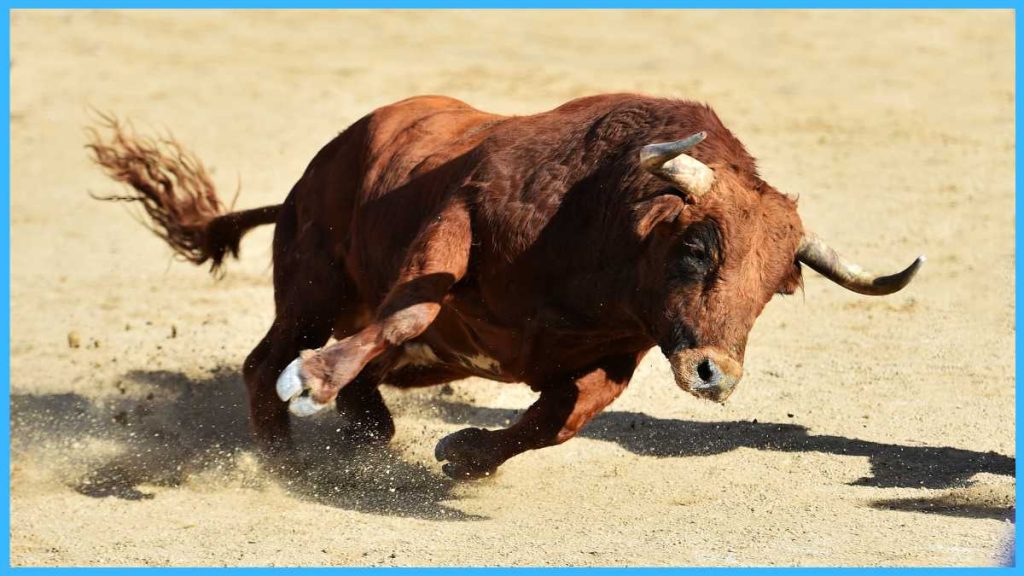
Winning
To win, a rider has to score the highest in the first two nights and qualify as part of the Top 20 squad. Then, he has to secure the highest score amongst the Top 20 in the ‘Short Go’ to become the champion.
Strategies & Tips
The temperament of the bull, where it will be, and how it will react in the situation are some things beyond anyone’s control. However, what riders can do is make the best of the worst. Using a few practical strategies, you can also increase your chances of staying on the bull for longer:
- Lean and sit forward (towards the bull’s shoulders) so that the bull rope is between your upper thighs. Make sure your feet are ahead of the bull rope, and use the spurs to grip the bull’s body tightly.
- Slide your hand under the bull rope, pull back, and wrap the rope or strap around your wrist. Make sure your grip is tight, and there is little distance between the bull’s body and your hands.
- Use the free hand to balance yourself by waving it in the air. Ensure that your body follows your hand with some momentum to give you that extra push you need to maintain balance.
- Stay centered always. The trick is to neither lean back nor forward too much. When the bull kicks the hind legs and drops the front, sit flat and sturdy to ensure you don’t get flung.
Equipment
There isn’t a lot of equipment that is used in bull riding. Here is a list of the things that are essential for the riders and the bull:
- Bull Rope (the riders hold onto this with one hand during the ride)
- Helmets (they can be substituted for cowboy hats, but helmets are encouraged for safety concerns)
- Boots and spurs
- Chaps (protective leg wear that prevents chaffing when the bull is bucking)
- Gloves (important because they give the rider a better grip and protect from rope burns)
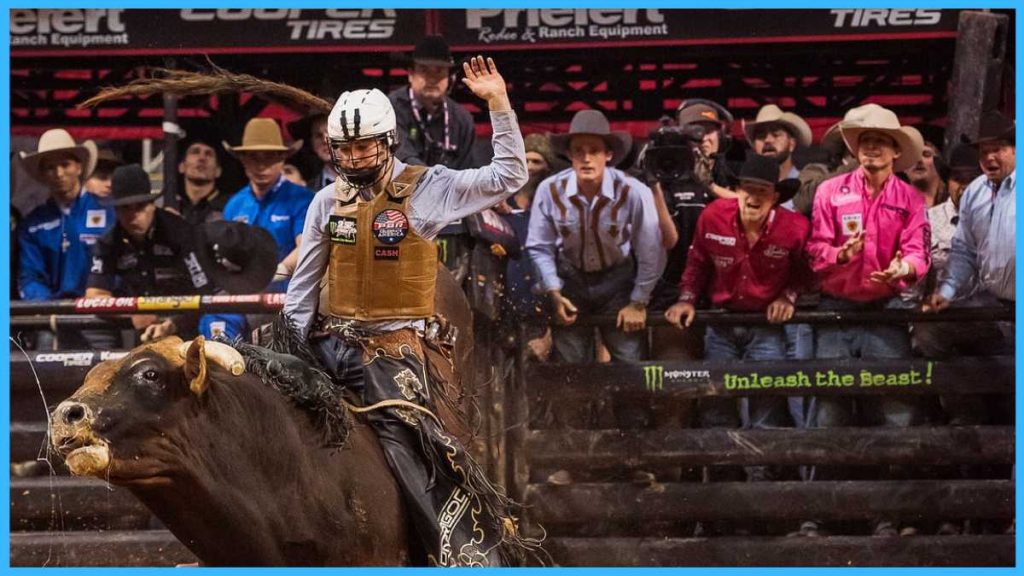
Did You Know?
- The origin of bull-riding can be traced back to the American ‘cowboys’ and the Spanish ‘vaqueros.’ However, the modern-day version of bull riding originated in America in the 19th century.
- The bulls allowed in professional competitions can weigh anywhere between 1500 pounds to 2000 pounds.
- The average duration of a bull ride is about 7.2 seconds. The riders need to hold on for 8 seconds.
- The PBR (Professional Bull Riders) is the official body for bull riding worldwide. It was founded in 1992 and has contributed significantly to the sport’s popularity since then.
- “Bushwacker” is an infamous bull that holds the record of never being properly ridden for 42 consecutive outs in the PBR circuit.
FAQs
Is bull riding safe?
Bull riding involves a great deal of risk, especially if you are not trained well enough. You need to master certain techniques before entering a bull riding arena, and even then, there’s always risk involved.
If I fall at 8 seconds, do I get a score, or do I get zero?
The idea is to cross the 8-second mark for the scoring to be valid. If you have just hit the eight mark and then went ‘off the bull,’ your score will be valid.
Are rodeo clowns always there in the arena?
Yes, rodeo clowns are always present to ensure the safety of the riders.
Indeed, bullriding is a dangerous but exhilarating sport. It is widely considered one of the most dangerous sports in the world. However, as electrifying as it is, the game has gained incredible popularity recently. It is now a popular sport globally in Canada, Brazil, Mexico, and Australia.
More and more people are finding themselves attracted to this sport thanks to its explosive and unpredictable nature. Now, different associations are hosting tournaments under similar but different bull riding rules.
Think you know enough? Get, set, and Roll! Keep coming back to Play With Rules for more such impactful learning on sports around the world.

